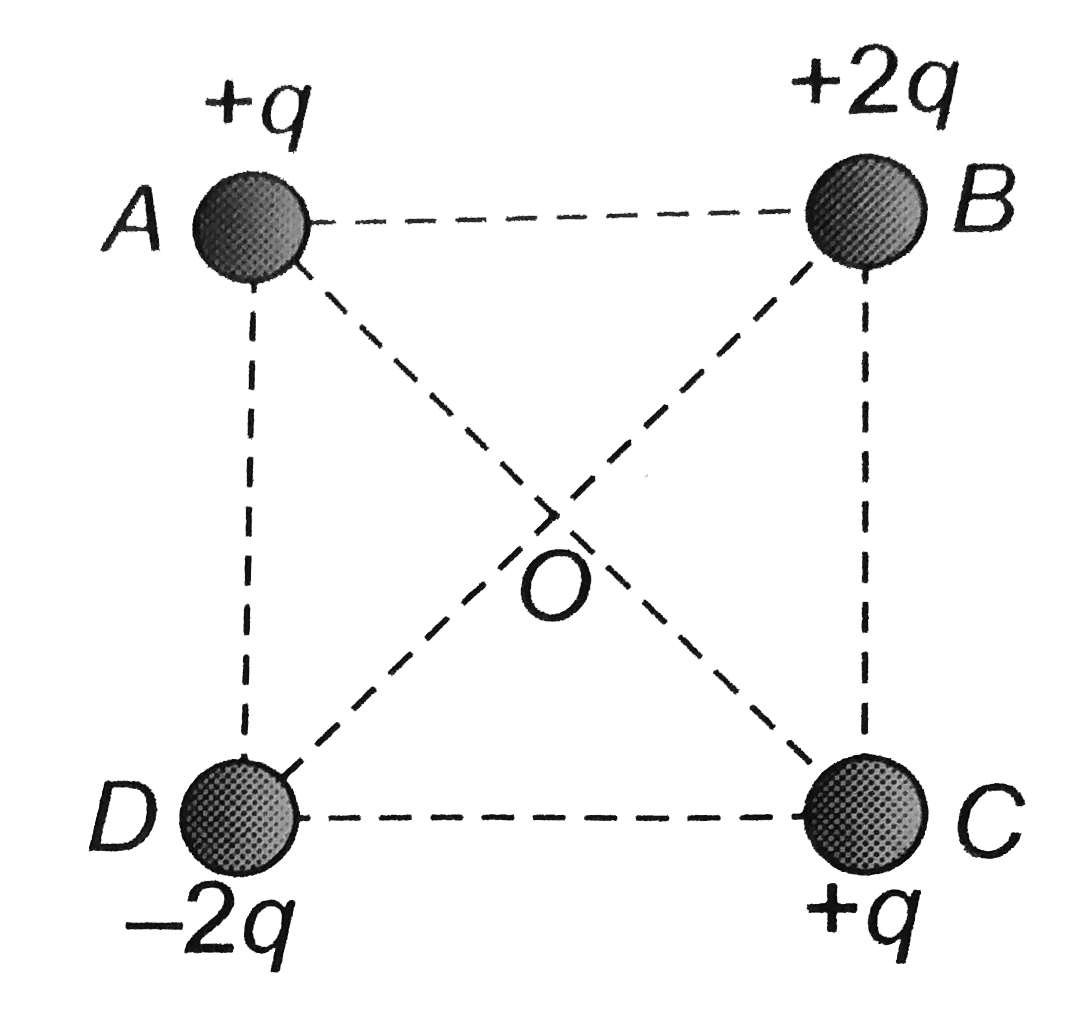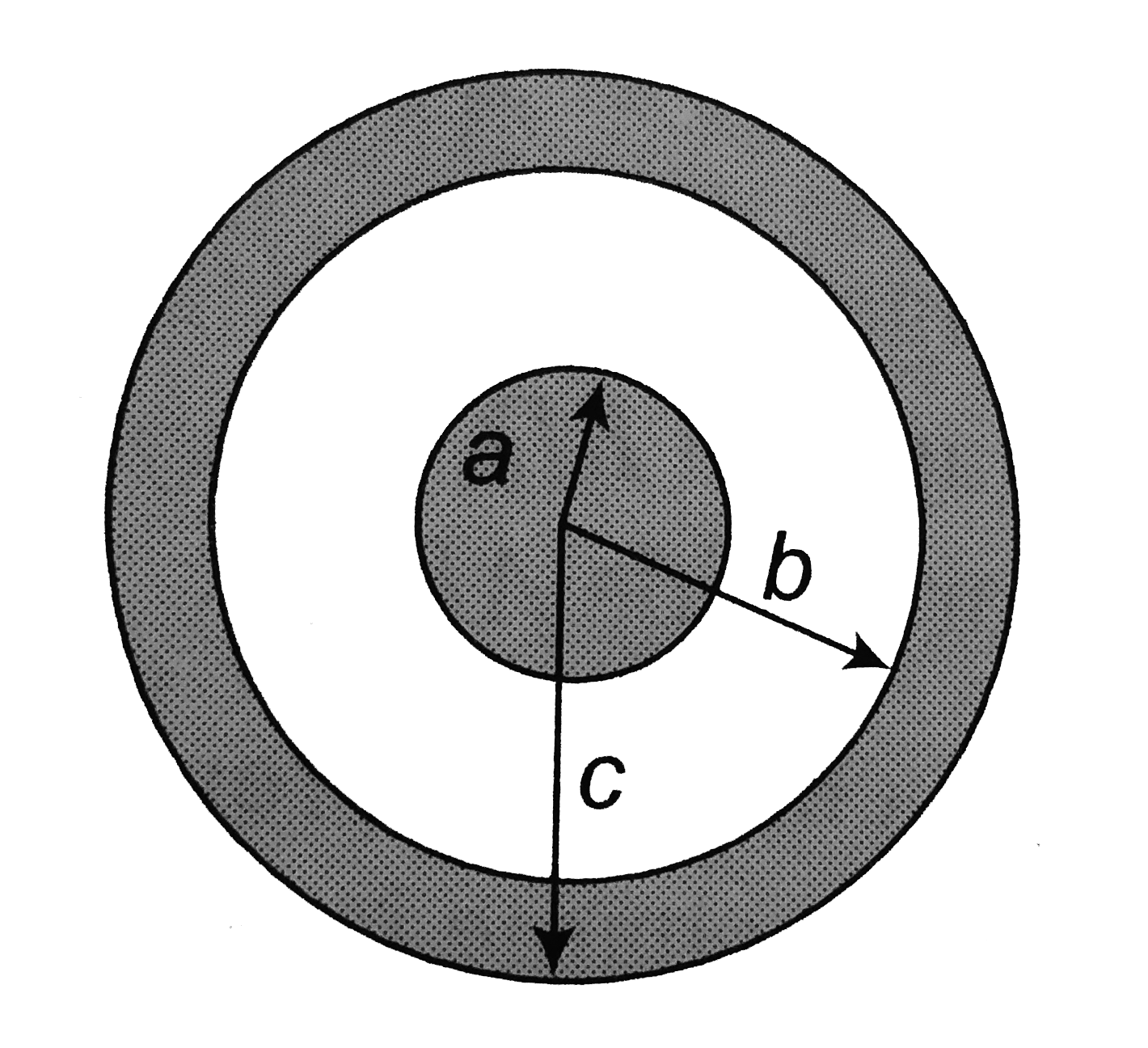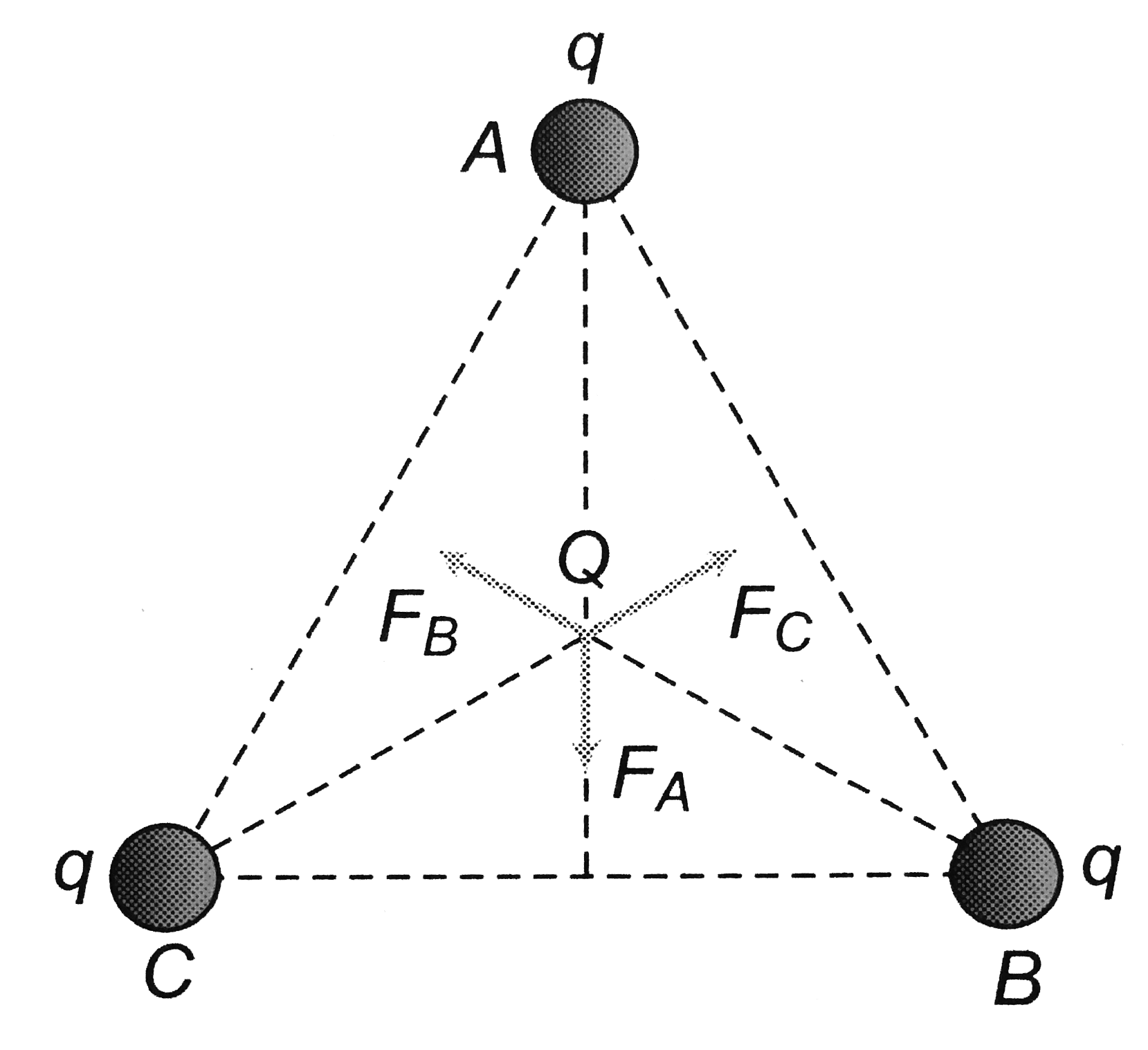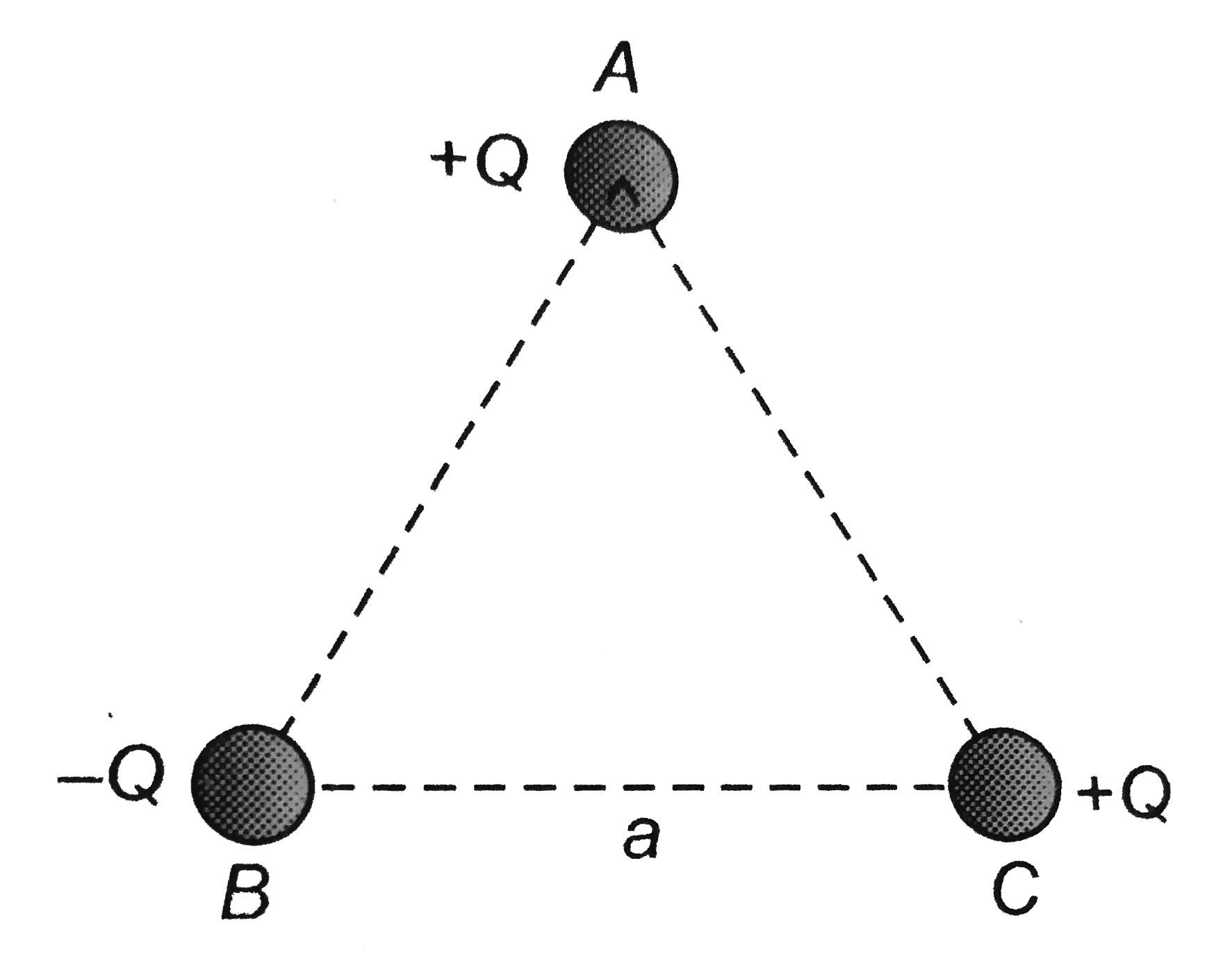Complete Solutions to Ordinary Thinking Objective Questions ( Charge and Coulomb.s Law ) of chapter ELECTROSTATICS of Class 12 book with complete answers and questions
| Class 12 | PHYSICS |
| Chapter | ELECTROSTATICS |
| ERRORLESS | Ordinary Thinking Objective Questions ( Charge and Coulomb.s Law ) |
| Number Of Questions | 70 |
| Academic Year | 2023-24 |
The law, governing the force between electric charges is known as
03:01View SolutionWhen the distance between two charged particles is halved, the force between them will become
01:30View SolutionThere are two charges +1 microcoulombs and +5 microcoulombs. The ratio of the forces acting on them will be
01:58View SolutionA charge `Q_1` exerts some force on a second charge `Q_2`. If a 3rd charge `Q_3` is brought near, the force of `Q_1` exerted on `Q_2` :-
02:24View Solution`F_(g)` and `F_(e)` represent gravitational and electrostatic force respectively between electrons situated at a distance 10 cm. The ratio of `F_(g)//F_(e)` is of the order of
04:21View SolutionThe ratio of the force between two small spheres (with constant charges) `F_(1)` in air and `F_(2)` in a medium of dielectric constant k is respectively..
05:13View SolutionA soap bubble is given a negative charge, then its radius
02:19View SolutionFour charges are arranged at the corners of a square `ABCD`, as shown in the adjoining figure, The force on a positive charge kept at the centre `O` is
 06:15View Solution
06:15View SolutionIn the absence of other conductors, the surface charge density
02:37View SolutionA body can be negatively charged by
02:39View SolutionThe minimum charge on an object is
02:57View SolutionA total charge `Q` is broken in two parts `Q_(1)` and `Q_(2)` and they are placed at a distance R from each other. The maximum force of repulsion between them will occur, when
05:02View SolutionThree charges `4q, Q` and `q` are in a straight line in the position of `0. l//2` and `l` respectively. The resultant force on `q` will be zero, if `Q=`
02:59View SolutionAn isolated solid metallic sphere is given +Q charge. The charge will be distributed on the sphere
02:57View SolutionTwo small balls having equal positive charge Q,C each are suspended by two insulating strings of equal length L meter form a hook fixed to a stand . The whole set up is taken to a satellite in space where there is no gravity. Calculate the angle between the two strings and the tension in each string.
05:07View SolutionIt two charges of 1 coulomb each are placed 1 km apart,then the force between them will be
02:06View Solution`+2C` and `+6C` two charges are repelling each other with a force of `12N`. If each charges is given `-2C` of charge is given `-2C` of charge, then the value of the force will be
01:09View SolutionDielectric constant of pure water is 81. Its permittivity will be
01:51View SolutionThere are two metallic spheres of same radii but one is solid and the other is hollow, then
01:27View SolutionIn a general, metallic ropes are suspended on the carries which take inflammable material. The reason is
02:10View SolutionThree equal charges are placed on the three corners of a square. If the force between `q_(1)` and `q_(2)` is `F_(12)` and that between `q_(1)` and `q_(3)` is `F_(13)`, then the ratio of magnitudes `(F_(12)//F_(13))` is
02:18View SolutionABC is a right angled triangle in which AB = 3 cm and BC = 4cm. And `/_ ABC =pi//2`. The three charges +15, + 12 and -20 e.s.u. are placed respectively on A, B and C . The force acting on B is
07:02View SolutionWhat is the effect of temperature on dielectric constant ?
01:06View SolutionTwo charges `q_1` and `q_2` are placed in vacuum at a distance d and the force acting between them is F . If a medium of dielectric constant 4 is introduced around them, the force now will be
02:37View SolutionForce of attraction between two point charges `Q` and `-Q` separated by `d` meter is `F_(e )`. When these charges are placed on two identical spheres of radius `R = 0.3 d` whose centres are `d` meter apart , the force of attraction between them is
01:53View SolutionWhen `10^(14)` electrons are removed from a neutral metal sphere , the charge on it becomes
01:39View SolutionA force F acts between sodium and chlorine ions of salt (sodium chloride) when put 1 cm apart in air. The permittivity of air and dielectric constant of water are `epsilon_(0)` and k respectively. When a piece of salt is put in water, electrical force acting between sodium and chlorine ions 1cm apart is
01:49View SolutionA conductor has `14.4 xx 10^(-19)` coulombs positive charge. The conductor has : (Charge on electron `= 1.6 xx 10^(-19)` coulombs
01:46View SolutionThe value of electric permittivity of free space is
02:34View SolutionTwo similar spheres having `+Q` and `-Q` charge are kept at a certain distance. F force acts between the two. If in the middle of two spheres, another similar sphere having `+Q` charge is kept, then it experiences a force in magnitude and direction as
04:10View SolutionA charge Q is divided into two parts of q and Q -q . If the coulomb repulsion between them when they are separated is to be maximum, the ratio of `Q/q` should be
02:33View SolutionCalculate the number of electrons consituting one coulomb of charge.
01:32View SolutionWhen air is replaced by a dielectric medium of constant K, the maximum force separated by a distance
03:13View SolutionA glass rod rubbed with silk is used to charge a gold leaf electroscope and the leaves are observed to diverge. The electroscope thus charged is exposed to `X`-rays for a short period. Then
02:23View SolutionOne metallic sphere `A` is given positive charge whereas another identical metallic sphere `B` of exactly same mass as of `A` is given equal amount of negative charge. Then
03:18View SolutionThe force between two charges 0.06 m apart is 5 N . If each charge is moved towards the other by 0.01 m, then the force between them will become
02:21View SolutionTwo charge spheres separated at a distance d exert a force F on each other. If they are immersed in a liquid of dielectric constant K=2, then the force (if all conditions are same) is
04:56View SolutionTwo point charges `+3 muC` and `+8muC` repel each other with a force of `40 N`. If a charge of `-5 muC` is added to each of them, then the force between them will become
03:01View SolutionWhen `10^(19)` electrons are removed from a neutral metal plate through some process, then the charge on it becomes
02:48View SolutionElectric charges of `1mu C, -1 mu C` and `2mu C` are placed in air at the corners `A,B` and `C` respectively of an equilateral triangle `ABC` having length of each side `10 cm`. The resultant force on the charge at `C` is
04:02View SolutionCharge on an `alpha`-particle is
02:26View SolutionTwo small conducting spheres of equal radius have charges `+ 10 muC` and `-20 muC` respectively and placed at a distance R from each other. They experience force `F_(1)`. If they are brought in contact and separated to the same distance, they experience force `F_(2)`. The ratio of `F_(1)` to `F_(2)` is
04:55View SolutionTwo charges each equal to `2mu C` are o.5 m apart. If both of them exist inside vacuum, then the force between them is
02:23View SolutionTwo charges are at a distance `d` apart. If a copper plate (conducting medium) of thickness `d//2` is placed between them , the effictive force will be
01:40View SolutionTwo electrons are separated by a distance of `1Å`. What is the Coulomb force between them?
02:06View SolutionTwo copper balls, each weighing `10 g` are kept in air `10 cm` apart. If one electron from every `10^(6)` atoms in trandferred from one ball to the other, the coulomb force between them is (atomic weight of copper is `63.5`)
06:08View SolutionA solid conducting sphere of radius `a` has a net positive charge `2Q`. A conducting spherical shell of inner radius `b` and outer radius `c` is concentric with the solid sphere and has a net charge `-Q`. The surface charge density on the inner and outer surfaces of the spherical shell will be
 03:19View Solution
03:19View SolutionThree charges each of magnitude `q` are placed at the corners of an equilateral triangle, the electrostatic force on the charge place at the centre is (each side of triangle is `L`)
 03:06View Solution
03:06View SolutionTwo charges placed in air repel each other by a force of `10^(-4)N`. When oil is introduced between the charges, then the force becomes `2.5 xx 10^(-5)N`
The dielectric constant of oil is02:20View SolutionThree charges are placed at the vertices of an equilateral trianlge of side `a` as shown in the following figure. The force experienced by the charge placed at the vertex `A` in a direction normal to `BC` is
 03:31View Solution
03:31View SolutionTwo particle of equal mass m and charge q are placed at a distance of 16 cm. They do not experience any force. The value of `(q)/(m)` is
02:59View SolutionWhen a glass rod is rubbed with silk, it
03:04View SolutionAn electron is moving round the nucleus of a hydrogen atom in a circular orbit of radius `r`. The coulomb force `vec(F)` between the two is (where `k=(1)/(4piepsilon_(0)))`
01:32View SolutionA body has `-80` micro coulomb of charge. Number of additional electrons in it will be
02:17View SolutionTwo point charges placed at a certain distance r in air exert a force F on each other. Then the distance r at which these charges will exert the same force in a medium of dielectric constnat K is given by
02:56View SolutionThe dielectric constant of a metal is
02:25View SolutionA charge of Q coulomb is placed on a solid piece of metal of irregular shape. The charge will distribute itself
03:24View SolutionFive balls numbered 1,2,3,4,and 5 are suspended using separated threads. The balls (1,2),(2,4) and (4,1) show electrostatic attraction while balls (2,3) and (4,5) show repulsion. Therefore, ball 1 must be
03:08View SolutionEqual charges `q` are placed at the four corners `A,B,C,D`of a square of length `a`. The magnitude of the force on the charge at `B` will be
05:30View SolutionTwo identical conductors of copper and aluminium are placed in an identical electric fields. The magnitude of induced charge in the aluminium will be
02:58View SolutionTwo spherical conductors B and C having equal radii and carrying equal charges on them repel each other with a force F when kept apart at some distance. A third spherical conductor having same radius as that B but uncharged is brought in contact with B, then brought in contact with C and finally removed away from both. The new force of repulsion between B and C is
03:23View SolutionWhen a body is earth connected, electrons from the earth flow into the body. This means the body is `….`
05:30View SolutionThe charges on two spheres are `+7muC` and `–5muC` respectively. They experience a force F. If each of them is given an additional charge of `–2muC`, the new force of attraction will be
01:43View SolutionThe ratio of electrostatic and gravitational force acting between electron and proton separated by a distance `5 xx 10^(-11)m`, will be (charge on electron `= 1.6 xx 10^(-19)C`, mass of electron `= 9.1 xx 10^(-31) kg`, mass of proton `= 1.6 xx 10^(-27) kg, G = 6.7 xx 10^(-11) N - m^(2)//kg^(2)`)
02:16View SolutionTwo point charges `3 xx 10^(–6) C` and `8 xx 10^(–6) C` repel each other by a force of `6 xx 10^(–3)` N. If each of them is given an additional charge – `6 xx 10^6` C, the force between them will be
03:28View SolutionTwo equally charged, indentical metal spheres `A` and `B` repel each other with a force `F"`. The spheres are kept fixed with a distance `r` between them. A third identical, but uncharged sphere `C` is brought in contact with `A` and The magnitude of the net electric force on `C` is
04:21View SolutionTwo charges of equal magnitudes and at a distance r exert a force F on each other. If the charges are halved and distance between them is doubled, then the new force acting on each charge is
02:47View SolutionAn infinite number of charges, each of charge `1 mu C` are placed on the `x`-axis with co-ordinates `x=1,2,4,8….oo` If a charge of `1C` is kept at the origin, then what is the net force action on `1C` charge
04:54View SolutionThe number of electrons in 1.6 C charge will be
01:15View SolutionFour metal conductors having different shapes
1. A sphere 2. Cyclindrical
3.Pear 4.Lightning conductor
Are mounted on insulating stands and charged. The one which is best suited to retain the charges for a longer time is03:47View Solution
Ordinary Thinking Objective Questions ( Charge and Coulomb.s Law ) questions and complete solutions for chapter ELECTROSTATICS of UNIVERSAL BOOK DEPOT 1960 PHYSICS (HINGLISH) of Class 12
